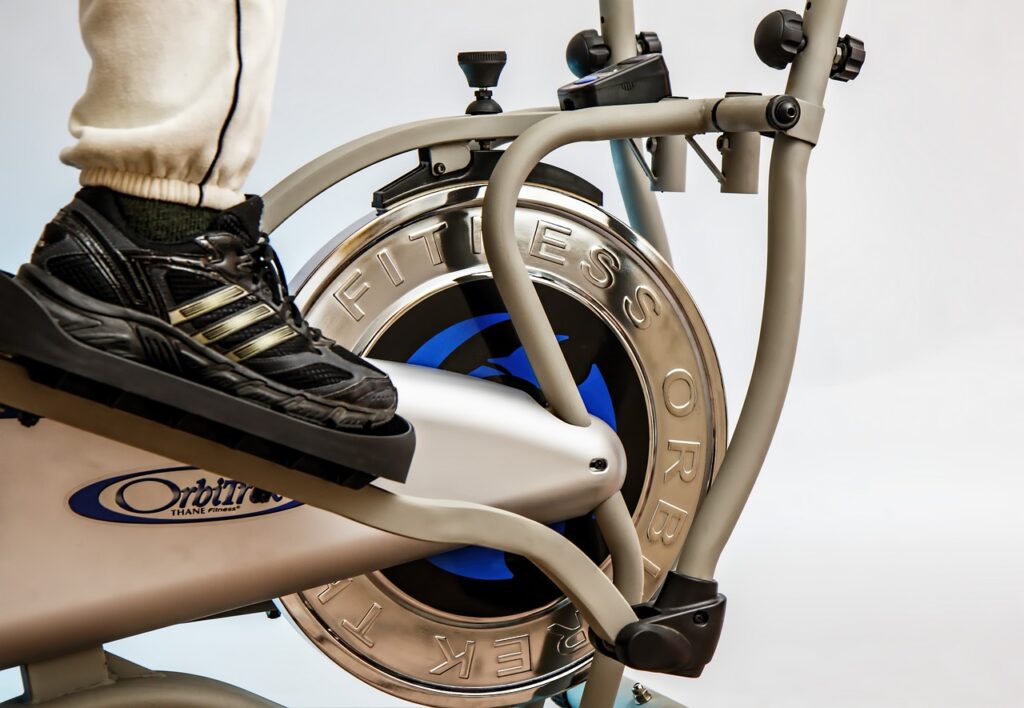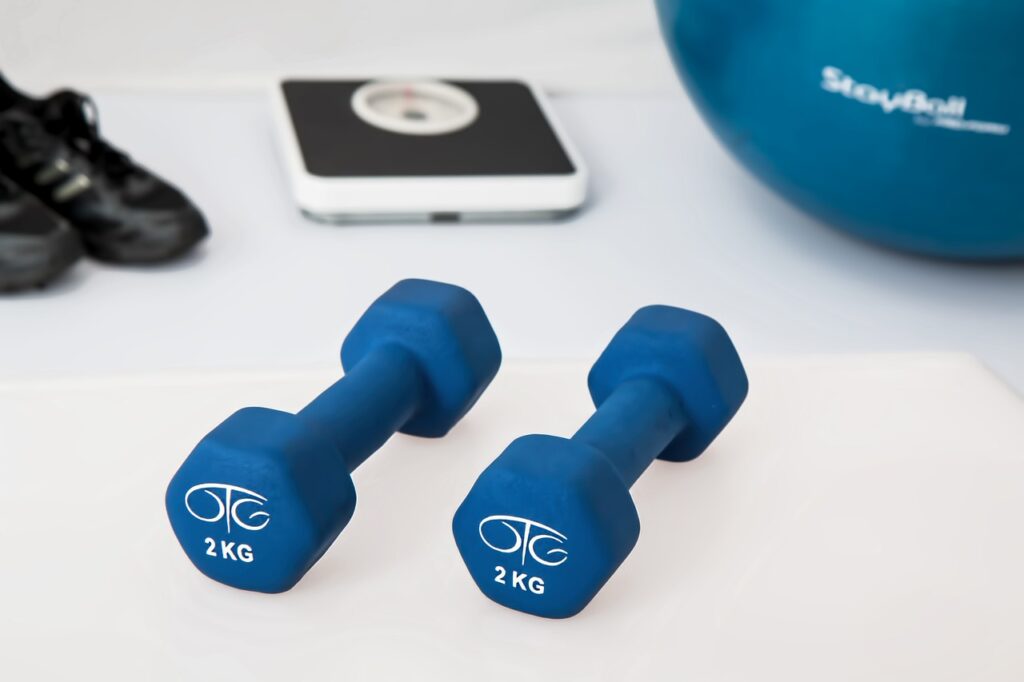
Many women experience discomfort and pain during their menstrual cycle, and the thought of exercising during this time may seem daunting. However, research shows that exercise can actually help alleviate menstrual symptoms and promote weight loss. In this article, we will explore the benefits of weight loss exercise during periods and provide tips on how to safely and effectively workout during this time.
One of the benefits of exercising during periods is that it can help reduce menstrual cramps. Exercise releases endorphins, which are natural painkillers that can help alleviate cramps and other discomforts associated with menstruation. Additionally, exercise can help regulate hormones and improve mood, which can further reduce menstrual symptoms.
Another benefit of weight loss exercise during periods is that it can help promote weight loss. Many women experience bloating and water retention during their menstrual cycle, which can make them feel heavier. However, exercising can help reduce bloating and promote weight loss by increasing metabolism and burning calories.
Table of Contents
Understanding Menstrual Cycle and Exercise
Phases of the Menstrual Cycle
The menstrual cycle is the regular natural change that occurs in the female reproductive system. It is a complex process that involves the release of an egg from the ovaries, thickening of the uterine lining, and the shedding of the lining if pregnancy does not occur. The menstrual cycle is divided into four phases: the menstrual phase, the follicular phase, the ovulatory phase, and the luteal phase.
- Menstrual phase: This is the first phase of the menstrual cycle and lasts for about 3-7 days. During this phase, the uterus sheds its lining, and bleeding occurs.
- Follicular phase: This phase starts after the menstrual phase and lasts for about 7-10 days. During this phase, the body prepares for ovulation by thickening the uterine lining.
- Ovulatory phase: This is the phase where ovulation occurs, and it typically lasts for about 1-2 days. During this phase, an egg is released from the ovaries.
- Luteal phase: This phase starts after ovulation and lasts for about 10-14 days. During this phase, the uterine lining thickens in preparation for pregnancy.
Impact of Hormonal Fluctuations on Exercise
Hormonal fluctuations during the menstrual cycle can impact exercise performance. During the menstrual phase, women may experience fatigue, cramping, and bloating, which can make it challenging to exercise. During the follicular phase, estrogen levels increase, which can lead to an increase in energy and improved exercise performance. During the ovulatory phase, women may experience a slight dip in energy levels. During the luteal phase, progesterone levels increase, which can lead to fatigue and decreased exercise performance.
It is important to listen to your body during the menstrual cycle and adjust your exercise routine accordingly. Engaging in low-impact exercises such as yoga, walking, or swimming can be beneficial during the menstrual phase. During the follicular phase, high-intensity exercises such as running or weightlifting may be more beneficial. During the luteal phase, it is important to prioritize rest and recovery to allow the body to recover from the hormonal fluctuations.
Benefits of Exercise During Periods
Regular exercise is important for overall health and wellbeing, and this is true even during periods. In fact, there are several benefits of exercising during periods that women should be aware of.
Pain Relief and Improved Mood
One of the benefits of exercising during periods is pain relief. Exercise can help reduce menstrual cramps and back pain, which can be especially helpful for women who experience severe pain during their periods. Additionally, exercise can also improve mood and reduce stress and anxiety, which can be particularly beneficial for women who experience mood swings during their periods.
Maintaining Regular Exercise Habits
Another benefit of exercising during periods is that it can help women maintain their regular exercise habits. Many women may feel tempted to skip workouts during their periods due to discomfort or fatigue, but maintaining regular exercise habits can help prevent weight gain and improve overall health and fitness. Additionally, regular exercise can also help regulate menstrual cycles and reduce the severity of PMS symptoms.
In summary, there are several benefits of exercising during periods, including pain relief, improved mood, and maintaining regular exercise habits. Women should aim to incorporate exercise into their daily routine, even during their periods, to reap these benefits and support their overall health and wellbeing.
Safe Weight Loss Exercises During Periods
When it comes to weight loss exercises during periods, it’s important to prioritize safety and comfort. Here are some safe and effective exercises to consider during your menstrual cycle.
Low-Intensity Cardio
Low-intensity cardio exercises such as walking, cycling, and swimming can be great options during periods. These exercises can help increase blood flow and reduce cramps without putting too much strain on the body. It’s important to listen to your body and avoid pushing yourself too hard during this time.
Strength Training Modifications
Strength training can also be a safe and effective way to lose weight during periods. However, it’s important to modify your exercises to avoid putting too much pressure on the lower back and abdominal muscles. Consider using lighter weights and focusing on exercises that target the upper body, such as bicep curls and shoulder presses.
Yoga and Flexibility Workouts
Yoga and other flexibility workouts can be great options for weight loss during periods. These exercises can help reduce stress and tension, improve blood flow, and alleviate cramps. Consider incorporating poses that focus on the hips and lower back, such as the pigeon pose and the child’s pose.
Overall, it’s important to listen to your body and prioritize safety and comfort during periods. By incorporating these safe and effective exercises into your routine, you can achieve your weight loss goals while still taking care of your body.
Nutrition and Hydration
Dietary Considerations for Weight Loss
When it comes to weight loss during periods, nutrition plays a crucial role. It is important to maintain a balanced diet that provides all the necessary nutrients to the body while also being low in calories. A diet rich in protein, fiber, and healthy fats can help in reducing weight while keeping the body healthy.
Consuming foods that are high in sugar and saturated fats should be avoided as they can lead to weight gain and bloating. It is also important to limit the intake of processed foods and snacks that are high in calories and low in nutrients.
Here are some dietary considerations that can aid in weight loss during periods:
- Focus on consuming whole foods such as fruits, vegetables, lean proteins, and whole grains.
- Incorporate healthy fats such as avocado, nuts, and seeds into the diet.
- Limit the intake of sugar and saturated fats.
- Avoid processed foods and snacks.
- Keep track of calorie intake and maintain a calorie deficit.
Importance of Hydration
Hydration is crucial for weight loss during periods. Drinking enough water can help in reducing bloating and water retention, which are common during periods. It can also help in boosting metabolism and aiding in weight loss.
Here are some tips for staying hydrated:
- Drink at least 8-10 glasses of water per day.
- Avoid sugary drinks such as soda and energy drinks.
- Incorporate hydrating foods such as watermelon, cucumber, and celery into the diet.
- Drink water before and after exercise.
In conclusion, maintaining a balanced diet and staying hydrated are important factors in weight loss during periods. By making small changes to the diet and staying hydrated, one can achieve their weight loss goals while also keeping the body healthy.
Listening to Your Body
Recognizing Personal Limits
When it comes to weight loss exercise during periods, it is important to recognize personal limits. Every person’s body is different and will have different needs and limitations. It is important to listen to your body and not push it beyond its limits.
Some signs that you may be pushing your body too hard include feeling lightheaded, dizzy, or nauseous. If you experience any of these symptoms, it is important to stop exercising immediately and rest.
Adjusting Intensity Based on Comfort
Adjusting the intensity of your workout based on your comfort level is key to a successful weight loss exercise routine during periods. It is important to start with a low intensity and gradually increase it as your body becomes more comfortable with the exercise.
Some low-intensity exercises that can be done during periods include walking, yoga, or light weight lifting. These exercises help to increase blood flow and reduce cramps.
It is also important to wear comfortable clothing and use proper equipment to prevent any discomfort or injury. By listening to your body and adjusting the intensity of your exercise routine, you can achieve your weight loss goals while still taking care of your body during periods.
Recovery and Rest
Adequate Sleep
Getting enough sleep is crucial for weight loss and overall health. During periods, it’s important to prioritize sleep and aim for 7-9 hours of uninterrupted sleep each night. Lack of sleep can lead to hormonal imbalances, increased stress levels, and difficulty in managing weight.
Active Recovery Techniques
While rest is important during periods, staying active can help reduce cramps and bloating. Low-impact exercises such as yoga, walking, and swimming can help improve circulation and reduce inflammation. Foam rolling and stretching can also help alleviate muscle soreness.
It’s important to listen to your body and not overdo it during periods. Rest and recovery are just as important as exercise, and taking a break when needed can help prevent injury and improve overall performance.
Exercise Precautions During Periods
Avoiding Overexertion
During periods, women may experience fatigue, cramps, and mood swings, which can make it challenging to maintain a regular exercise routine. It is essential to listen to your body and avoid overexertion during these times. Overexertion can lead to injuries, worsen cramps, and increase fatigue. It is recommended to reduce the intensity of your workouts during periods and focus on low-impact exercises such as walking, yoga, or swimming.
Managing Menstrual Flow During Workouts
It is common for women to experience heavy menstrual flow during the first few days of their periods. This can make it challenging to engage in physical activities. However, there are ways to manage menstrual flow during workouts. Wearing a tampon or menstrual cup can provide more flexibility and comfort than pads. Additionally, wearing dark-colored workout clothes can help conceal any leakage.
It is crucial to maintain good hygiene during periods, especially when engaging in physical activities. Make sure to change your tampon or menstrual cup every few hours and shower immediately after exercising to prevent any bacterial infections.
In conclusion, exercise can help alleviate menstrual symptoms, but it is essential to take precautions during periods. By avoiding overexertion and managing menstrual flow, women can continue to maintain a healthy exercise routine during their menstrual cycle.
Setting Realistic Goals
Short-Term vs. Long-Term Objectives
When it comes to weight loss exercise during periods, setting realistic goals is crucial. It’s important to understand the difference between short-term and long-term objectives. Short-term objectives are goals that can be achieved within a few weeks or months, while long-term objectives are goals that take several months or even years to achieve.
It’s important to set both short-term and long-term objectives to keep yourself motivated. Short-term objectives can help you see progress quickly, while long-term objectives can help you stay focused on your ultimate goal.
Tracking Progress
Tracking your progress is a key component of achieving your weight loss goals. Keeping a record of your weight, measurements, and exercise routine can help you stay on track and motivated. There are many ways to track your progress, including using a fitness app, keeping a journal, or using a spreadsheet.
It’s important to remember that weight loss is not always a linear process. There may be times when you plateau or even gain weight temporarily. This is normal and should not discourage you from continuing your exercise routine. By setting realistic goals and tracking your progress, you can stay motivated and achieve your weight loss objectives.
Motivation and Support
Finding a Supportive Community
Having a supportive community can make a big difference in sticking to a weight loss exercise routine during periods. Joining a group of like-minded individuals can provide accountability, encouragement, and motivation. This can be achieved through in-person groups, online forums, or social media groups.
When searching for a supportive community, it’s important to find a group that aligns with personal values and goals. It’s also important to ensure that the group is led by a qualified professional or experienced individual. This can help ensure that the advice and support provided is safe and effective.
Staying Motivated
Staying motivated during a weight loss exercise routine can be challenging, especially during periods. However, there are several strategies that can help maintain motivation.
Setting realistic goals and tracking progress can provide a sense of accomplishment and motivation. Celebrating small victories along the way can also help maintain motivation.
Incorporating variety into the exercise routine can also help prevent boredom and maintain motivation. This can be achieved through trying new exercises, incorporating music or podcasts, or exercising with a friend.
Finally, it’s important to remember the benefits of regular exercise, including improved physical and mental health. Keeping these benefits in mind can help provide the motivation needed to stick to a weight loss exercise routine during periods.
Frequently Asked Questions
Should I modify my workout routine during my menstrual cycle?
It is recommended that women modify their workout routine during their menstrual cycle to accommodate for the physical and emotional changes that occur during this time. It is important to listen to your body and adjust your exercise intensity and duration accordingly. It is also important to stay hydrated and nourished during this time.
Are there specific exercises that can alleviate period discomfort?
Yes, there are specific exercises that can help alleviate period discomfort, such as yoga, stretching, and low-impact cardio exercises. These exercises can help improve circulation, reduce cramps, and ease bloating.
What impact does menstruation have on exercise performance and endurance?
Menstruation can have a varying impact on exercise performance and endurance. Some women may experience a decrease in energy and endurance during their period, while others may not notice any difference. It is important to listen to your body and adjust your workout routine accordingly.
How can I safely continue my weight loss journey while on my period?
You can safely continue your weight loss journey while on your period by adjusting your diet and exercise routine. It is important to stay hydrated and nourished, and to focus on low-impact exercises during this time. Additionally, it is important to allow for rest and recovery as needed.
Is it beneficial to engage in physical activity during menstruation for pain relief?
Yes, engaging in physical activity during menstruation can be beneficial for pain relief. Low-impact exercises such as yoga and stretching can help alleviate cramps and improve circulation, leading to reduced pain and discomfort.
Are there any risks associated with intense workouts during menstruation?
There are some risks associated with intense workouts during menstruation, such as increased risk of injury and fatigue. It is important to listen to your body and adjust your workout routine accordingly to avoid these risks.

